A Tipping Point for Mangrove Restoration and Shrimp Farming in Indonesia
Silvo-aquaculture has been suggested as a potential solution for the Mahakam Delta...
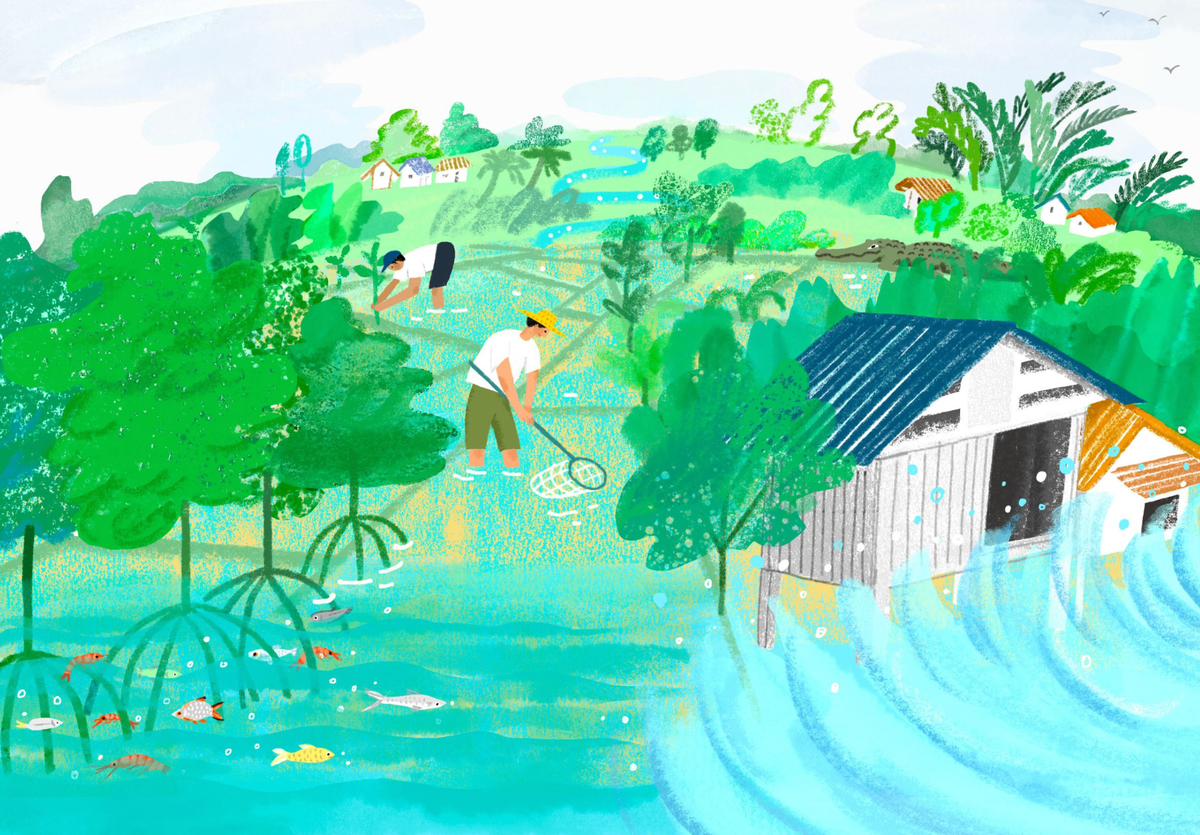
This story by Muhibar Sobary Ardan originally appeared in Dialogue Earth.
The Mahakam River flows for 900km from the highlands of central Borneo through thick rainforest before fanning into a lush delta that feeds the Makassar Strait. Once dense with mangroves and palms, the wetland islands protected coastal communities, supported biodiversity and served as a significant carbon sink.
However, in the 1980s, shrimp ponds began replacing the mangroves. By 2020, around half of the delta’s forests were lost due to weak regulatory enforcement and inadequate environmental protection. This large-scale deforestation increased the area’s vulnerability to climate change.
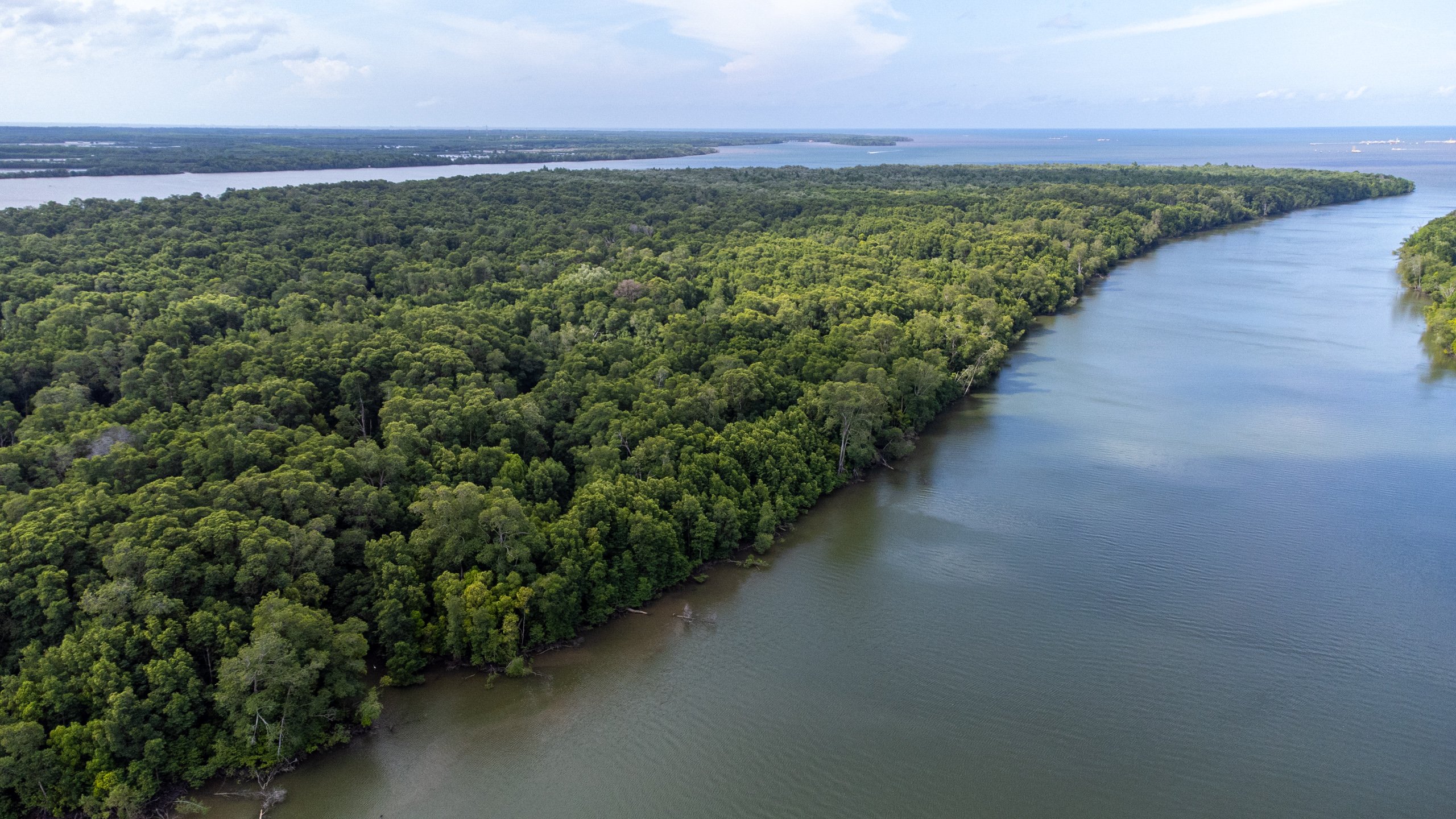
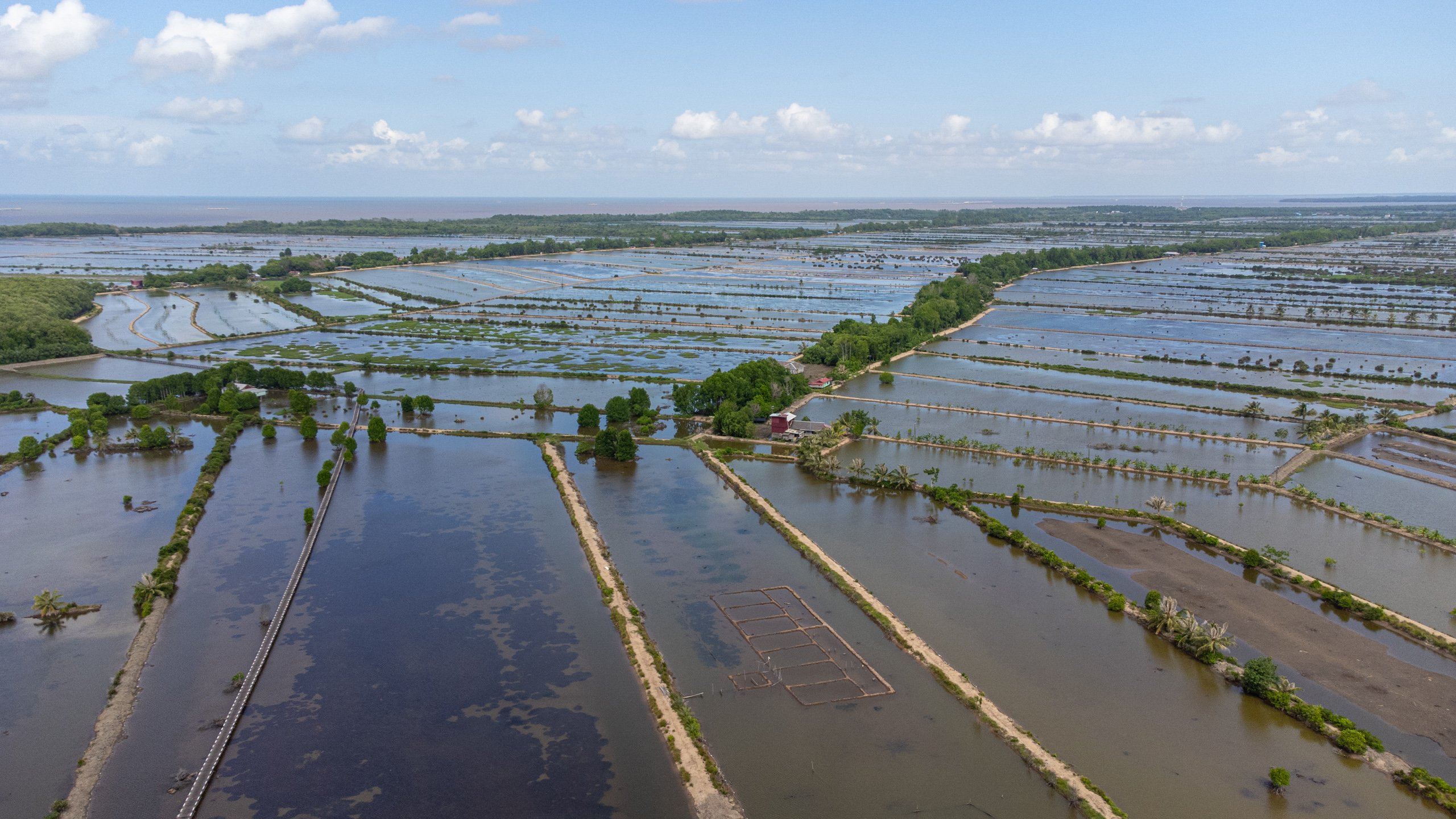
In response, several mangrove restoration programmes were launched by the Indonesian government, with a major reforestation project first announced in 2000, “but the expected outcome was not achieved”.
Experts say poor methodology and limited practical support are to blame for the programme failures, exacerbating the communities’ vulnerability to natural hazards like erosion and storm surges.
Shrimp farmers fear mangroves could attract dangerous wildlife, like crocodiles
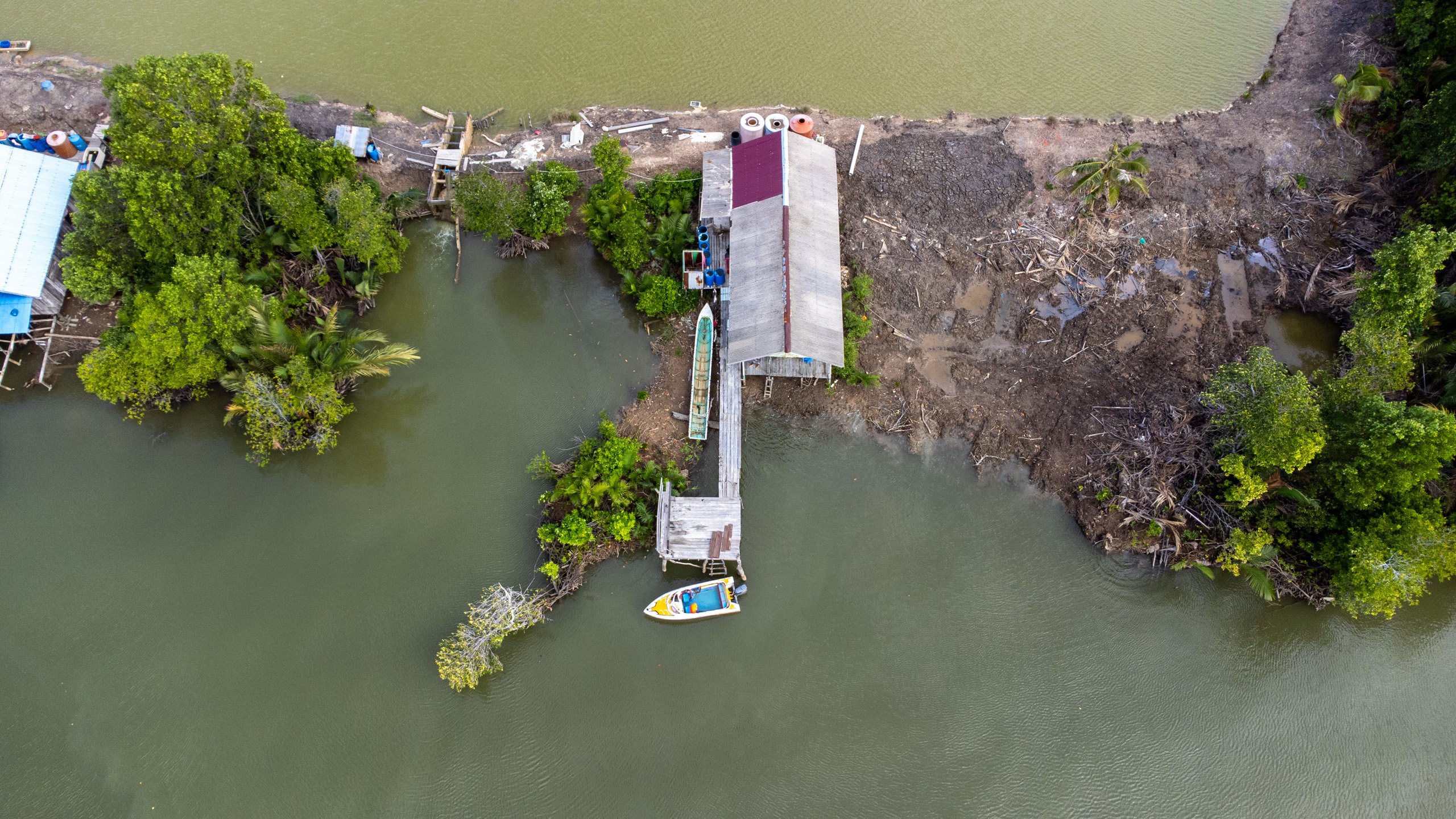
Erosion blights delta communities
One night in April, Muklis, a 40-year-old shrimp farmer, woke up to water flooding the floor of his wooden stilt house in Tani Baru, a village in East Kalimantan. Muklis, the village chief, had lived there his whole life and never seen such a severe storm. “The wave was so strong that it reached two metres [above my house],” Muklis told Dialogue Earth in June.
The wave was so strong it reached two metres above my house
Muklis
The storm destroyed a four-hectare pond, costing him tens of millions of rupiah (hundreds of USD) in revenue. Erosion events have intensified, Muklis said, especially during Indonesia’s windy seasons, from February to May and July to October, which combined with pollution and disease, have led to declining shrimp seedling survival rates.
“We try to plant [mangroves], we’ve made efforts, but with erosion, nothing survives,” Muklis explained, reflecting on repeated planting failures.
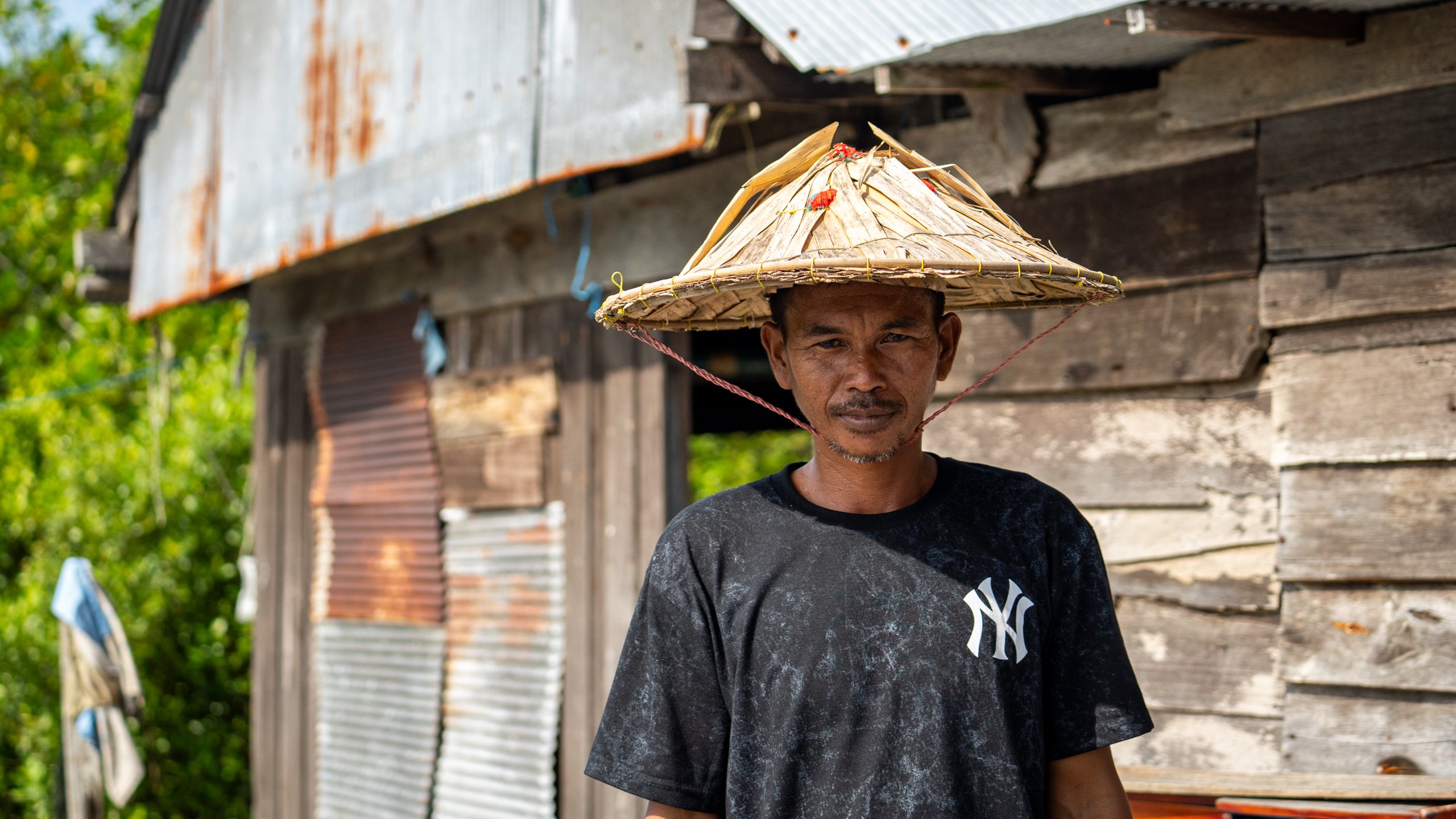
As mangrove forests have been depleted, shrimp farming yields in the delta have dropped drastically, with studies showing only one good harvest every four cycles, averaging yields of 45 kg/ha/year, a mere 10% of the yield seen in better-managed systems in places like Vietnam. Making matters worse, export prices have plummeted, said Muklis – from IDR 220,000 (USD 14) per kilogram before the pandemic to just IDR 150,000 (USD 9) today.
Some farmers are trying to stick it out. Andi Tenri Ajeng, also 40 and from Tani Baru village, has started catching crabs to supplement his income as yields from his seven-hectare pond decline. “The condition of the pond has changed; it now needs fertiliser, so costs are higher,” he explained, adding that renting equipment for pond repairs also increases expenses.
Switching to crabs has proved profitable for Andi. “In mangroves, one crab can weigh up to 1kg, outside mangroves, crabs are smaller,” he said. Despite making USD 34 a day from catching crabs, his take-home pay averages around USD 18 after costs, like bait and fuel.

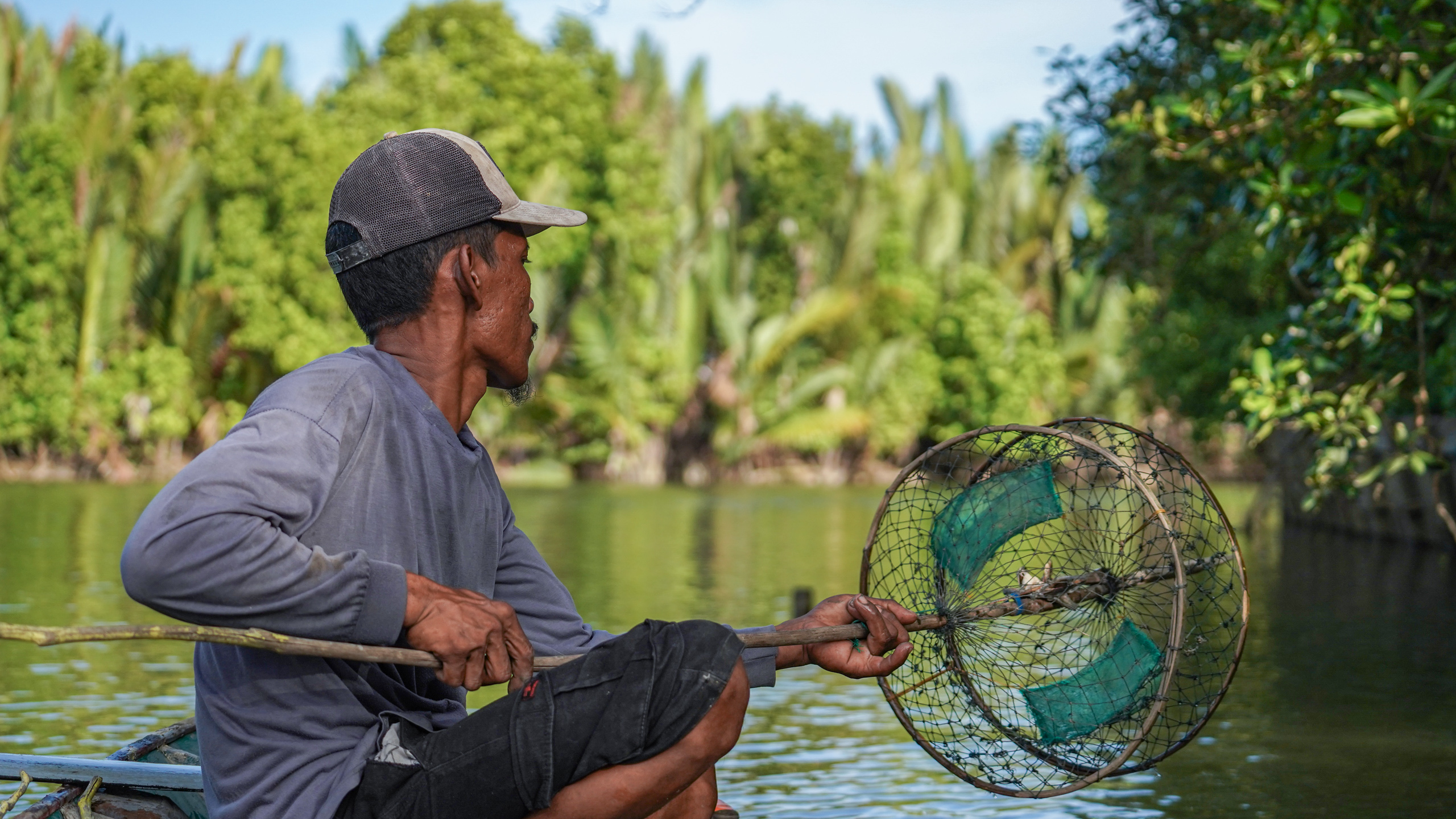
Many others have already left. Local registry records shared with Dialogue Earth, show that Tani Baru’s population decreased by more than 15% between 2019 and 2024 – from 3,798 to 3,206. Bagas, the village secretary who shared these stats, confirmed that many residents left on account of local conditions that had led to a drop in aquaculture yields. “Their land has turned into the sea, so what else can they do?” Muklis asked.
On a tour of the village, Muklis showed how his shrimp pond had shrunk from 10 hectares in the 1990s to just four hectares today. “There was a cemetery here, but it’s submerged now,” he also recalled, highlighting how erosion has claimed both productive land and community history.
Erosion has claimed both productive land and community history
Ecosystem disruption and the fight for survival
Indonesia’s mangrove forests are the world’s largest, spanning 3.5 million hectares – about a quarter of the global total. Yet, about one million hectares have been lost to aquaculture since 1800.
The shift toward shrimp farming nationally was driven by a combination of government support, global market demand and the 1980 trawl ban on destructive fishing nets, which followed widespread concern over the environmental and economic impacts. Shrimp farming emerged as a lucrative alternative. Spurred by government incentives, many coastal farmers across the archipelago converted large areas of mangrove forests into shrimp ponds.
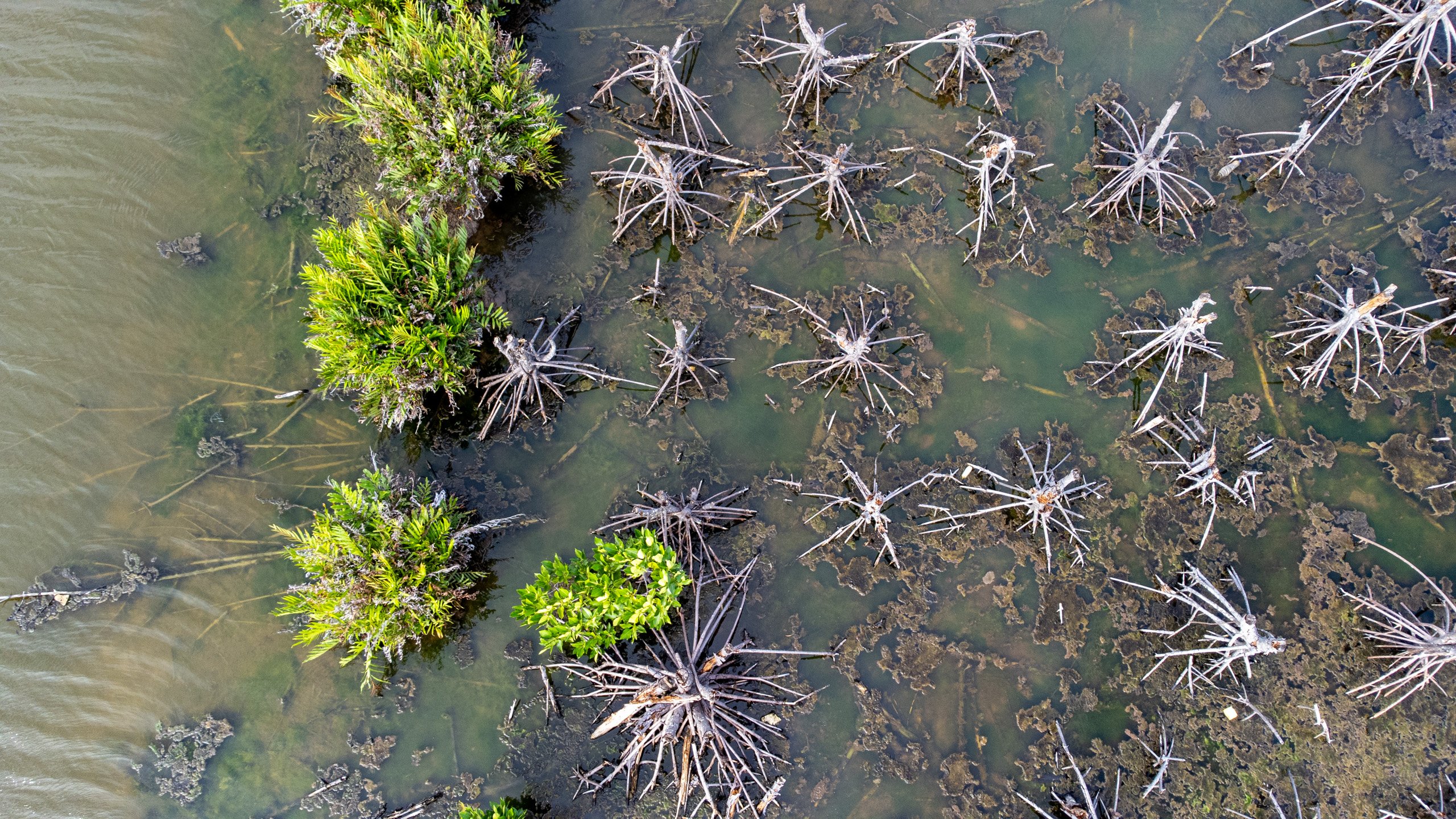
In 1989, 98% of the Mahakam Delta was mangrove forest, with shrimp ponds covering just 2%. By 2020, the balance had shifted – mangrove forests covered just 45% and shrimp ponds 55%. Today, Indonesia is one of the largest exporters of shrimp, with over 241,000 metric tonnesexported in 2022. As the forests were cleared, their ability to trap sediment and prevent coastal erosion diminished, along with their capacity to support biodiversity.
“Erosion can happen naturally, but if you remove the mangroves, there’s nothing to hold back the sea,” said Rustam, a forestry researcher at Mulawarman University. He said mangroves protect the delta and the local food chain, as many fish breed in mangrove forests. “And those fish are also a key food source for humans,” he explained.
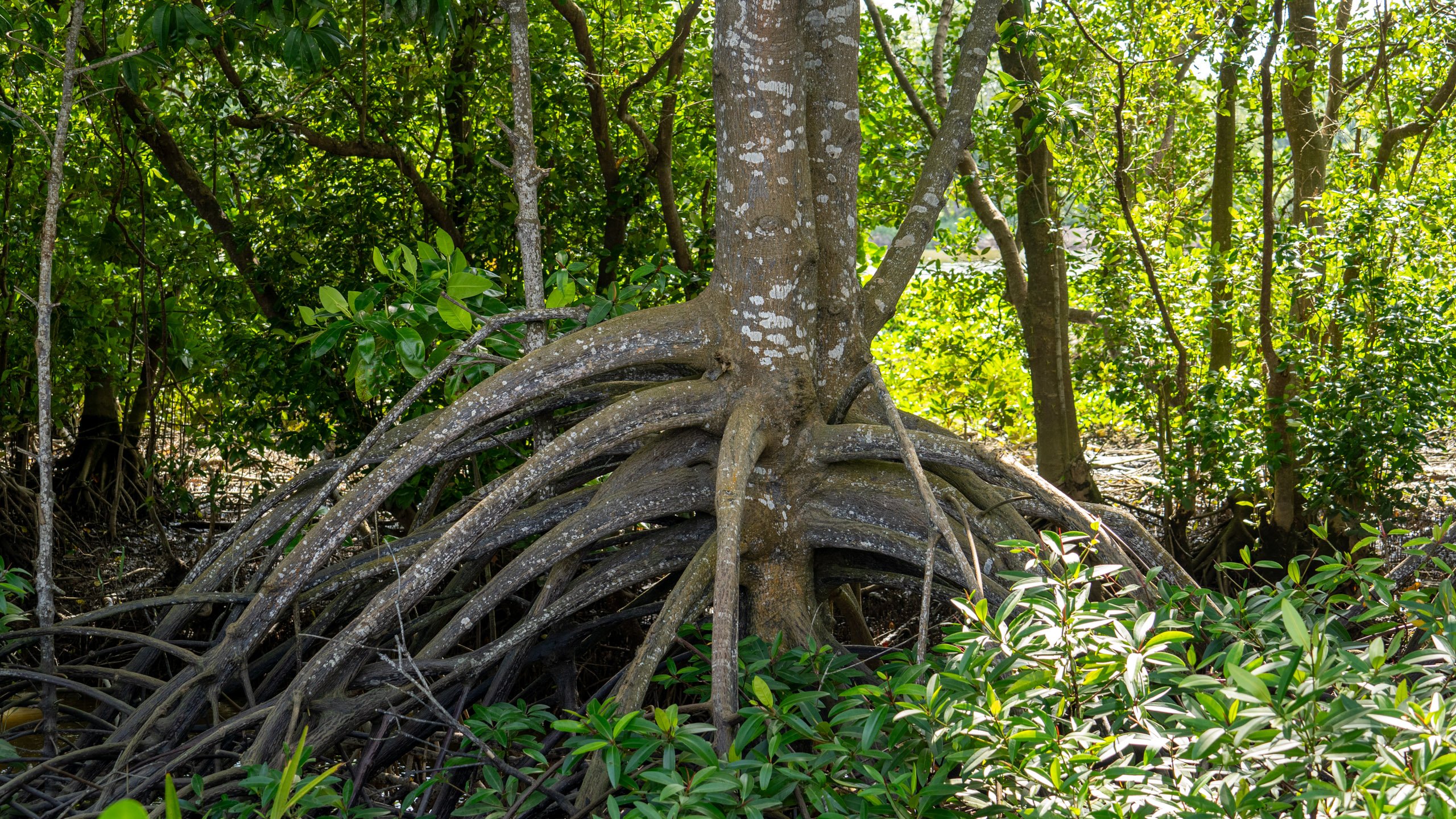
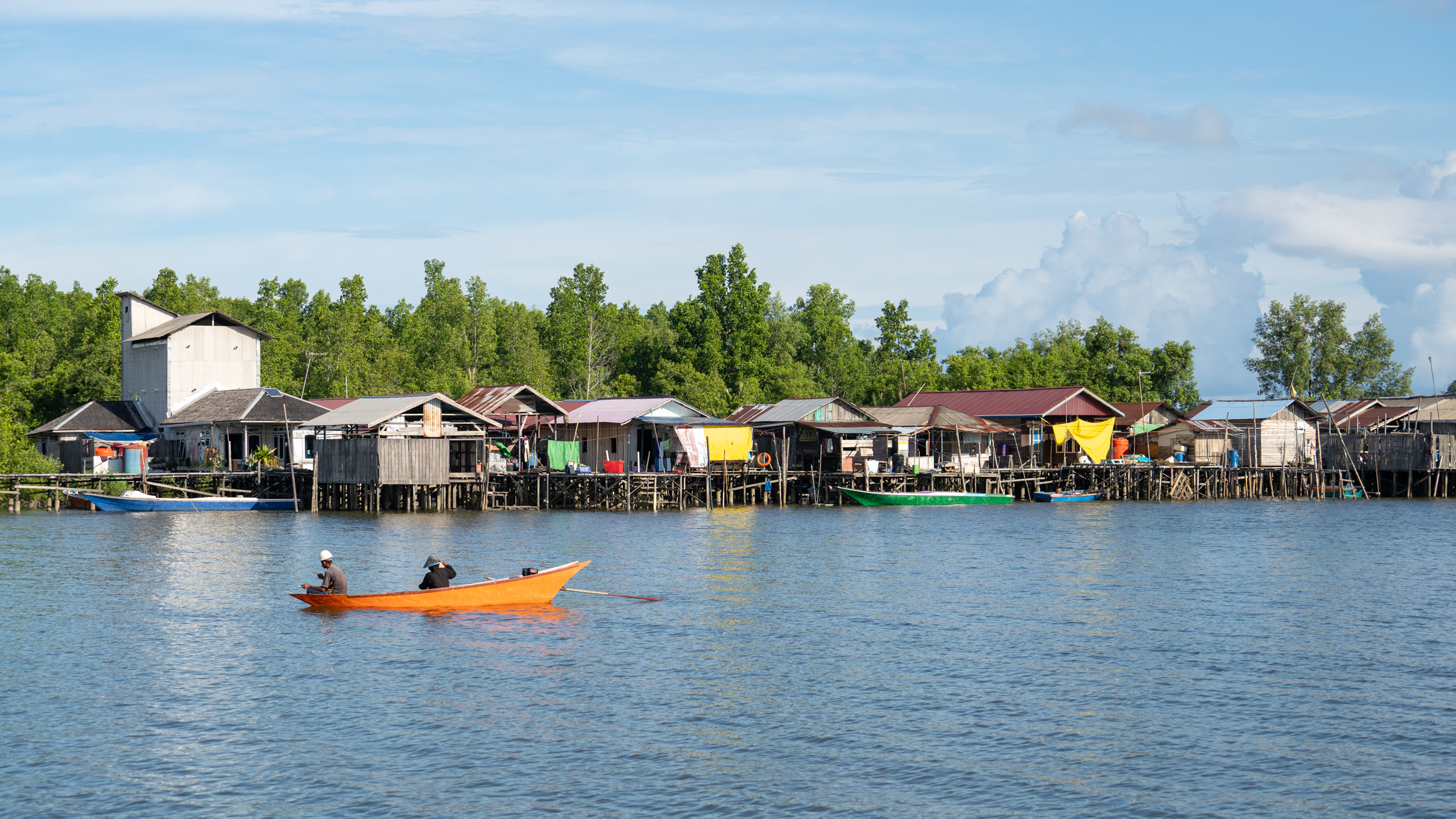
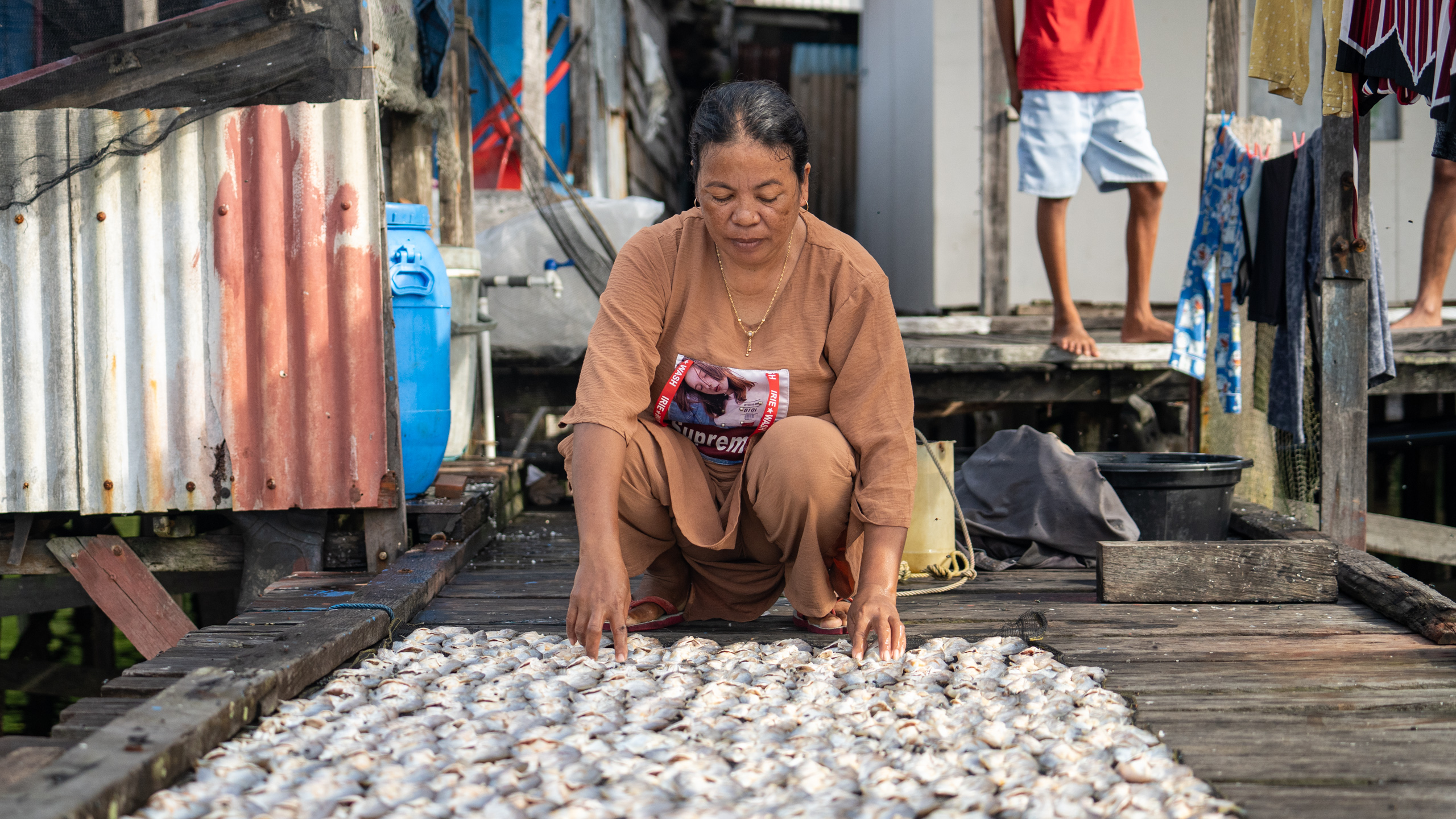
The loss of mangroves has increased risk for humans, too. Crocodiles, deprived of their natural habitat, are venturing into shrimp and fish ponds, putting farmers in danger. “Recently, many residents have been attacked [by crocodiles],” said Ambo Ufe, a resident of Muara Pantuan, a village two kilometres south of Tani Baru. This growing threat has caused fear to spread among villagers, who now avoid venturing near the ponds after dark.
Like others, Ambo has diversified from shrimp farming and now catches fish, crabs and blood clams (Tegillarca granosa), which he sells for IDR 25,000 (USD 1.5) per kg.
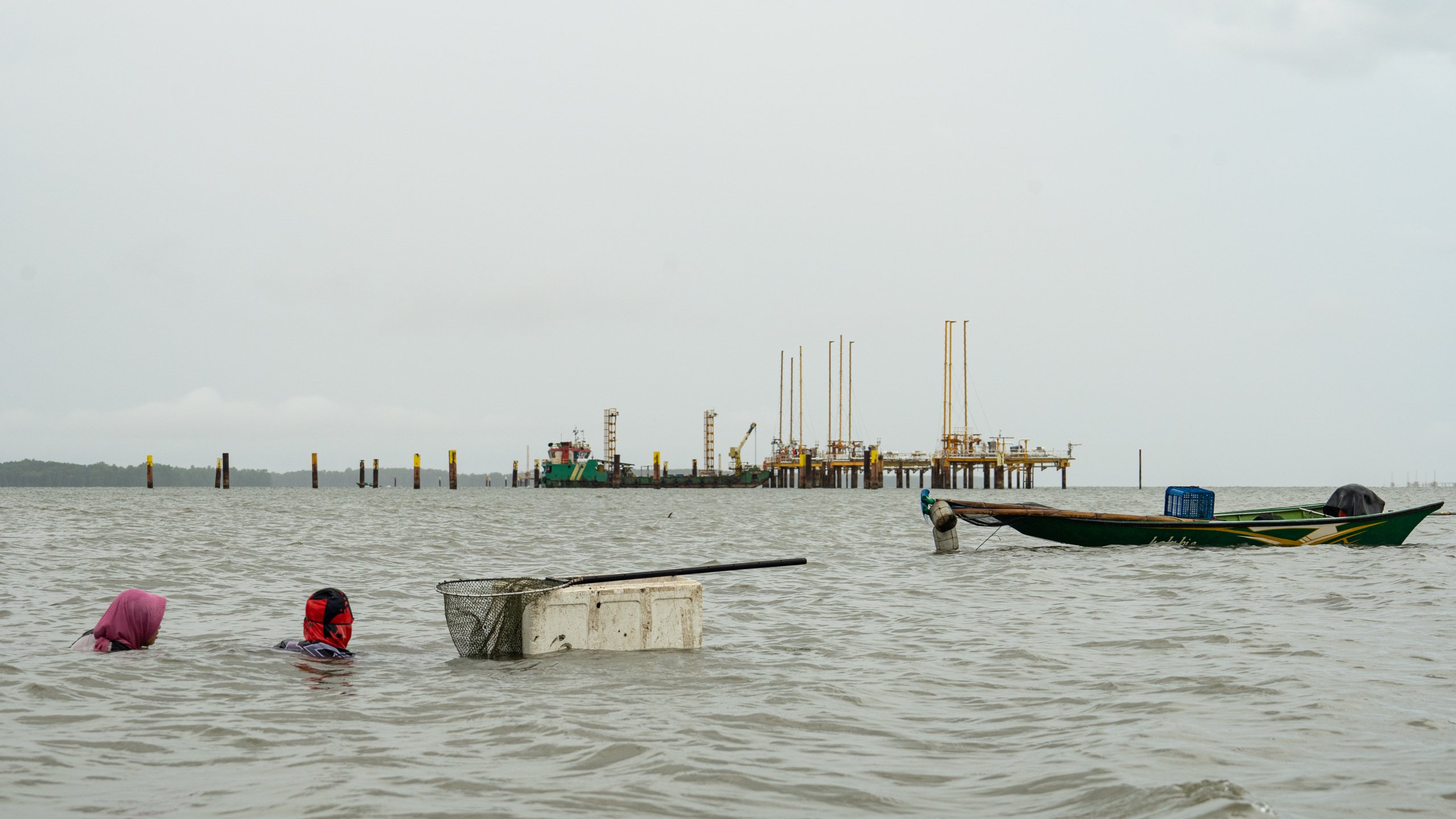
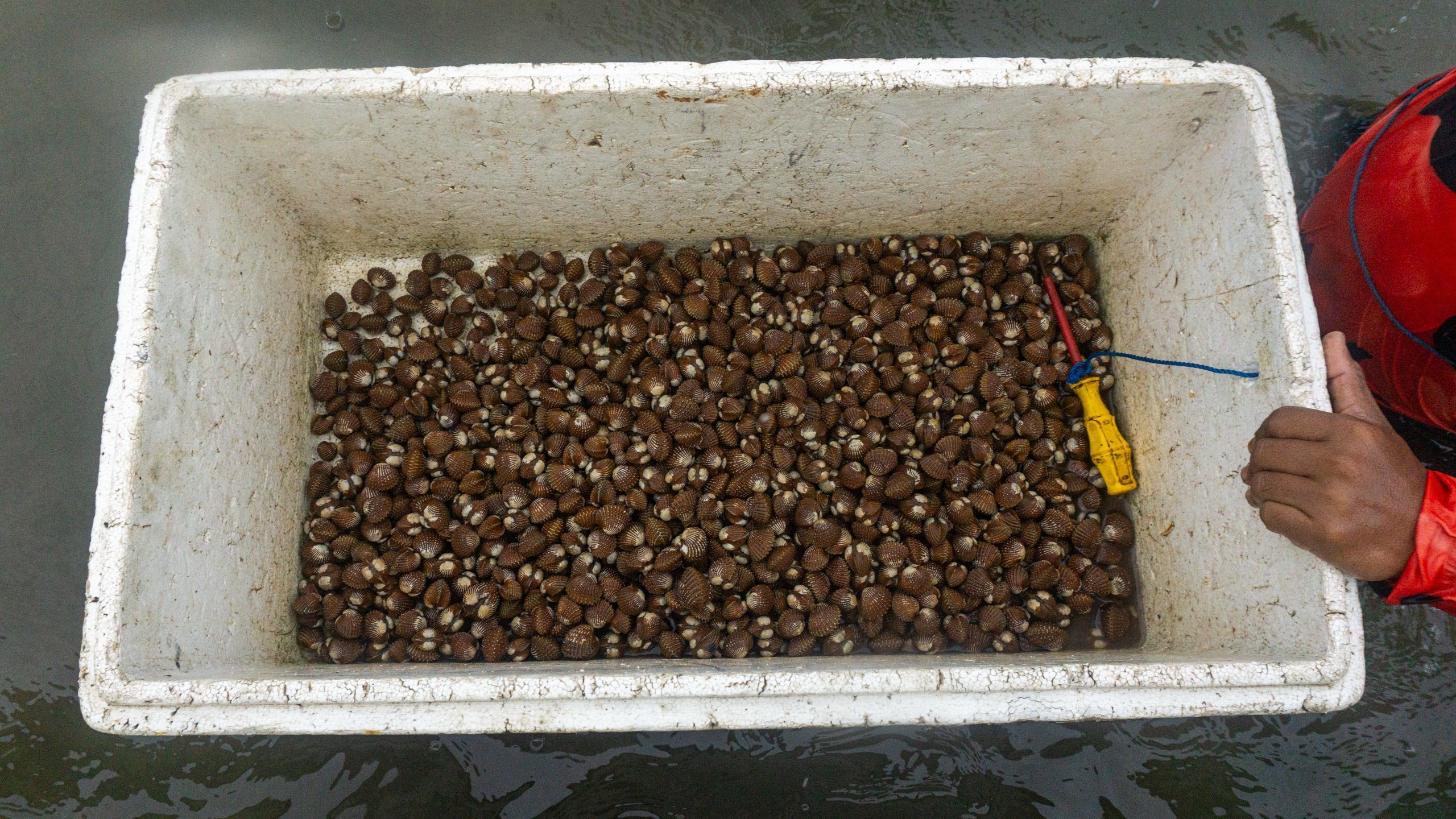
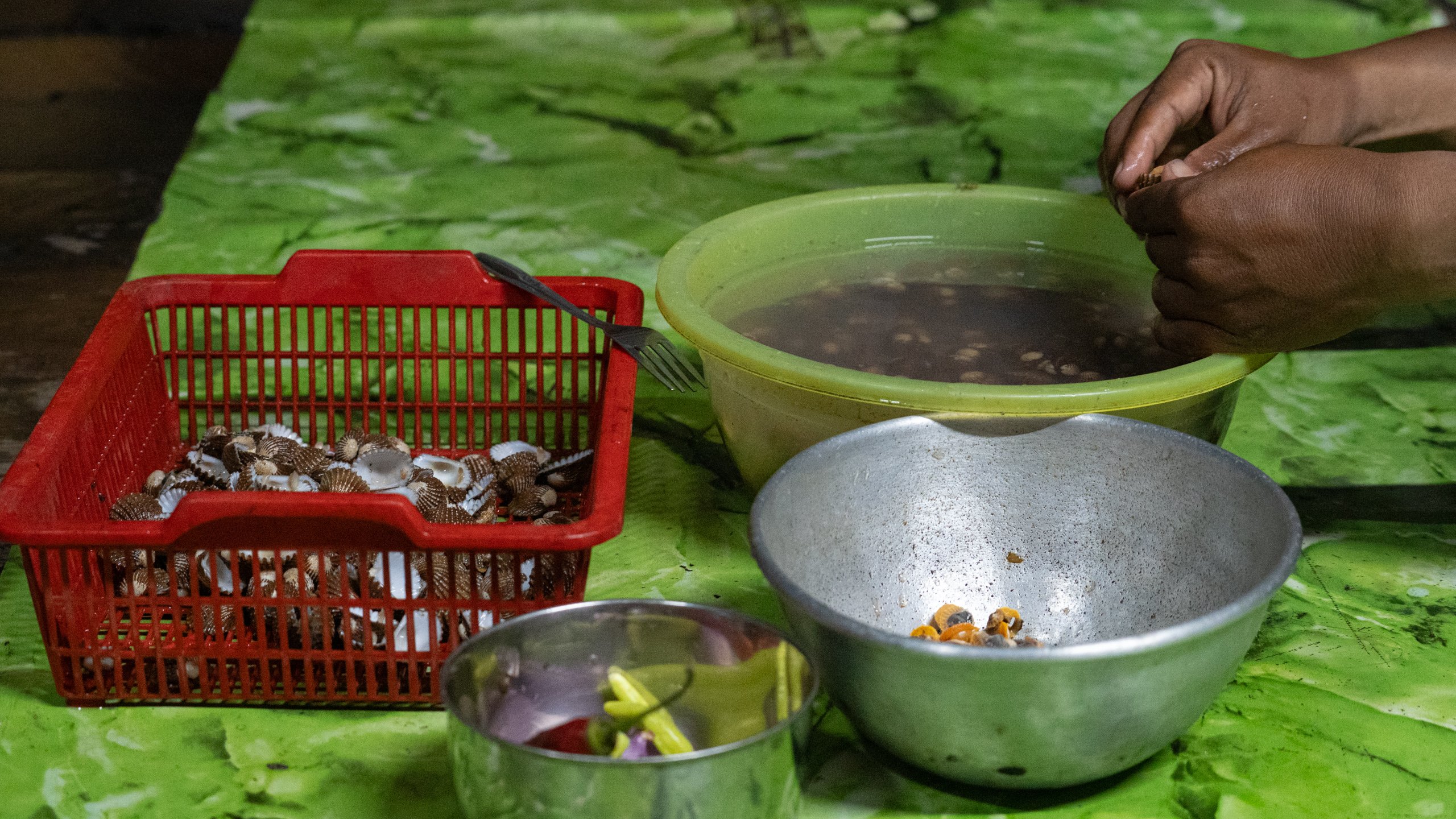
Failed mangrove programmes and the path forward
The East Kalimantan administration, which oversees the Mahakam Delta, set an ambitious target to restore 27,244 hectares of mangroves from 2021 to 2024. As of mid-2023, only 5,769 hectares had been successfully rehabilitated. Data shared exclusively with Dialogue Earth showed that the Peatland and Mangrove Restoration Agency (BRGM) exceeded its own restoration goal of 4,216 hectares, but this still falls far short of the targets set by the East Kalimantan administration’s Ministry of Forestry. This disparity highlights how objectives can differ across government agencies. However, experts note that while planting trees is crucial, maintaining them, especially in erosion-prone areas, is equally vital for long-term success.
When the reforestation programmes began, most delta villagers, like Muklis, Andi and Ambo, recognised the importance of mangroves for providing food for fish and preventing erosion. Participation in several government-run planting programmes was high. But Muklis said the schemes were ineffective, lacking wave barriers, such as concrete blocks, to prevent erosion.
“We planted five mangrove seedlings per hole, hoping at least two or three would grow. But none of them lived,” he explained. Despite persistent efforts, he said every attempt to restore the mangroves had failed.
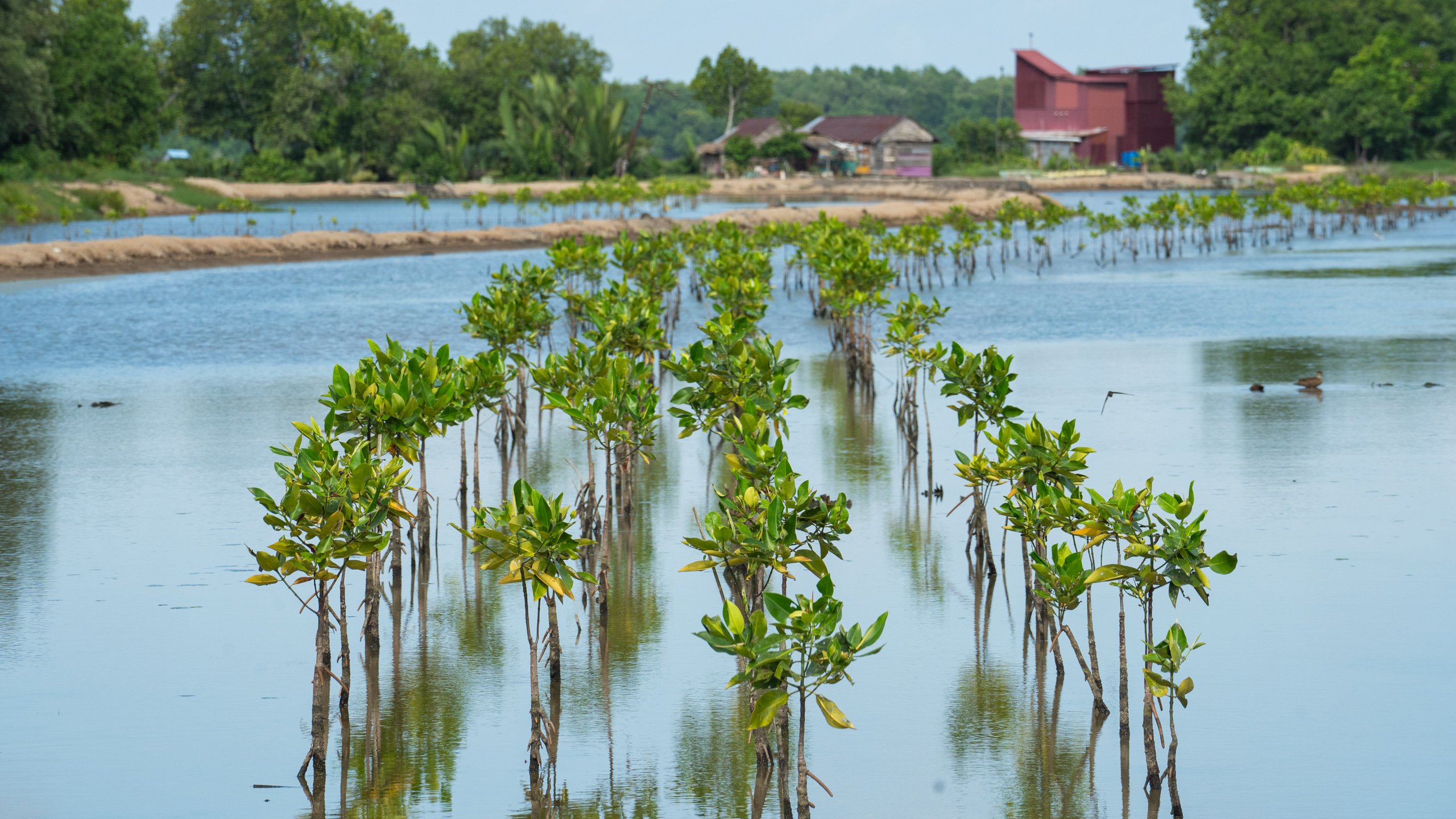
Syaiful Ahyar, head of the Mahakam Delta Forest Management Unit, one of several local government bodies tasked with overseeing reforestation efforts, admitted that farmers were reluctant to support programmes due to concerns over crocodiles and water contamination. He recognised restoration efforts had been suboptimal and said: “We are currently evaluating the failures.”
Hartono, head of BRGM, also acknowledged the difficulties in sustaining these programmes, citing a lack of maintenance funding. The National Economic Recovery (PEN) Programme includes funds for planting but not for upkeep, he explained.
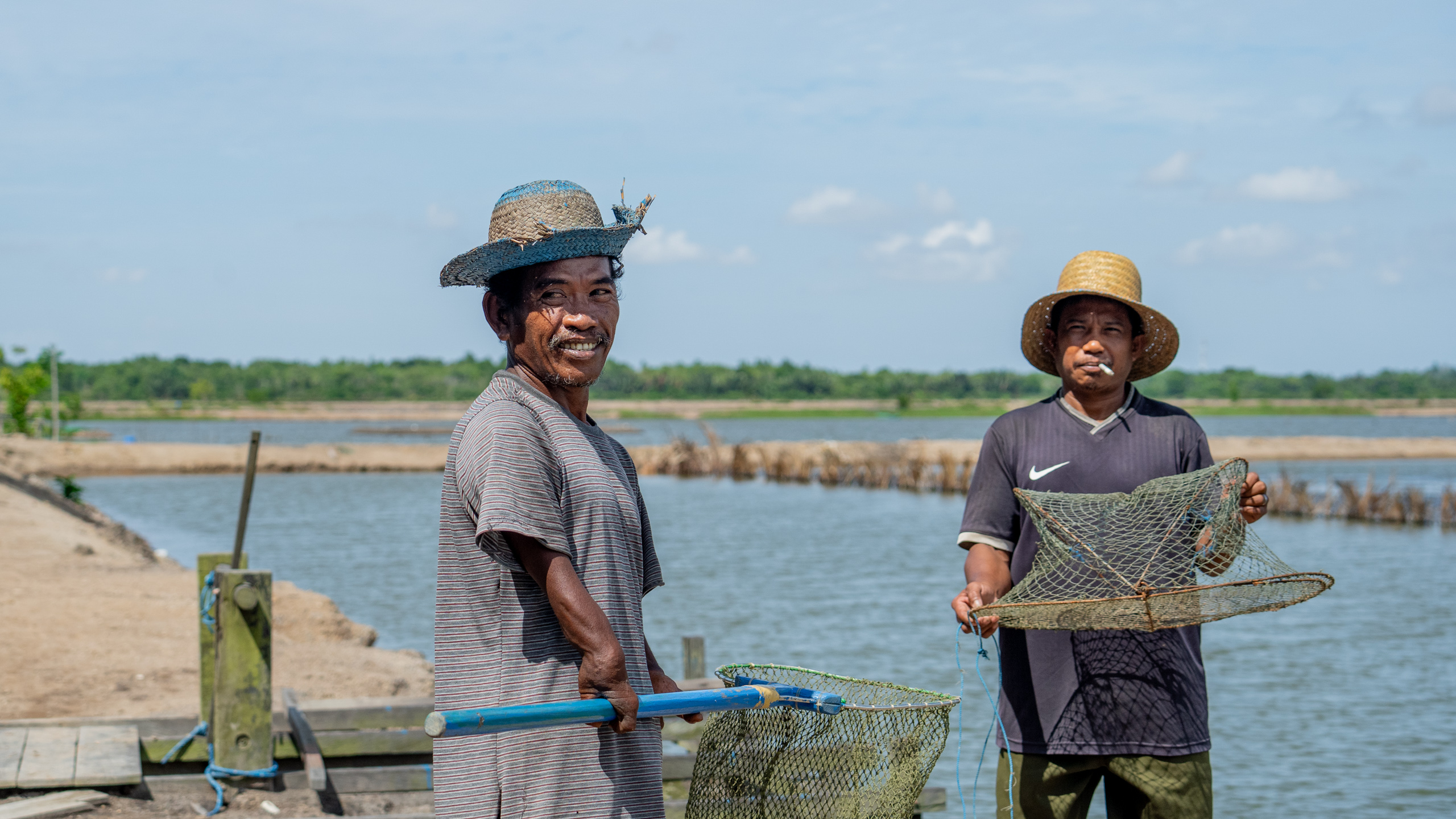
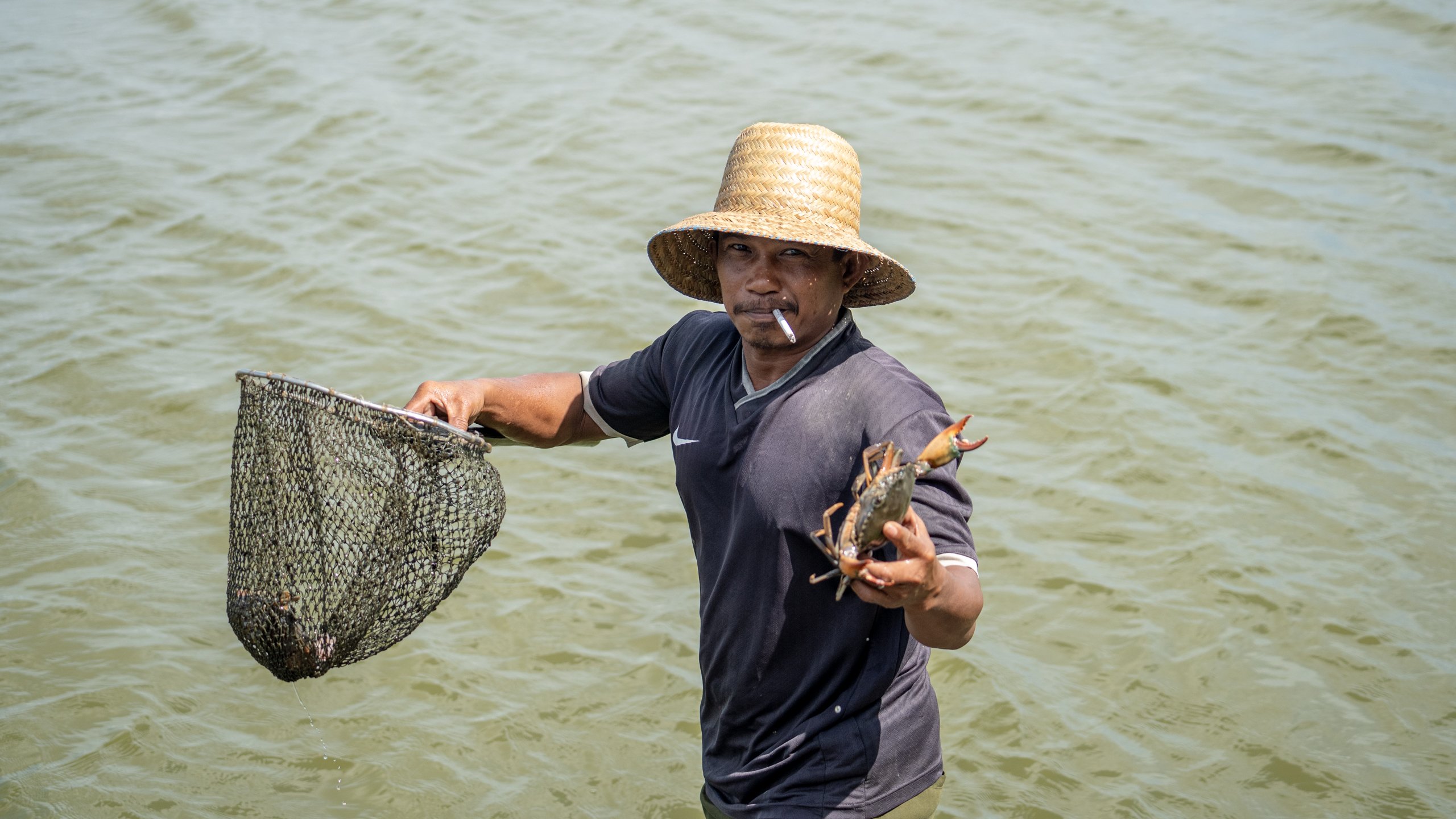
Esti Handayani Hardi, a fisheries researcher at Mulawarman University, was critical of the government’s approach, saying: “Promises have not significantly improved livelihoods. Basic needs remain unmet, and that is the core issue.”
Basic needs remain unmet, and that is the core issue
Esti Handayani Hardi
Communities are not responsible for the failures, she said. Although they understand the loss of mangroves has decreased productivity and increased vulnerability, they feel overwhelmed. She attributed much of the confusion to poor communication between government agencies, which left people unsure of what to do. “Their confusion stems from a lack of knowledge and proper guidance,” she added.
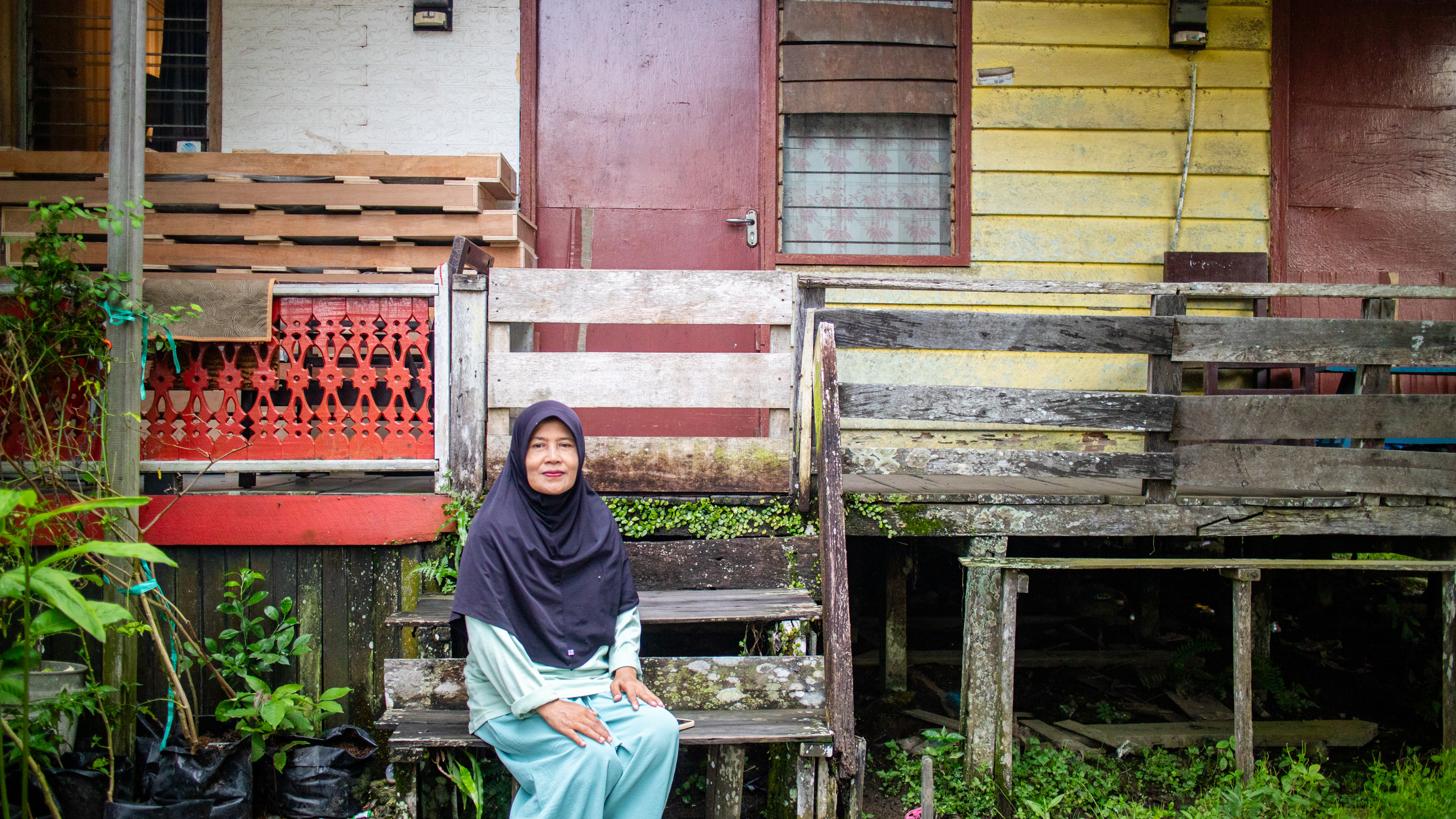
Esti’s observations echo those of key community figures, including Indri, head of Tani Baru Elementary School, who agreed about the widespread confusion among villagers. She explained the difficulty in persuading villagers to plant mangroves, which are seen as a threat to local livelihoods. She noted that mangrove forests near homes led to mosquito infestations, while those near ponds can become crocodile habitats.
“If the results are proven, farmers will want to adopt the method, and others will follow,” said Indri. “But if the results are bad, the community won’t be interested.”
Can mangroves and shrimp farming work together?
Silvo-aquaculture has been suggested as a potential solution for the Mahakam Delta, integrating mangroves into shrimp farms to benefit both the environment and shrimp production. Esti highlighted two methods: empang parit (trench pond), which involves digging a canal around a shrimp pond and planting mangroves, and komplangan, which keeps mangroves around the pond while keeping the pond itself clear.
After three years of trials in East Kalimantan, Esti told Dialogue Earth that her research concluded that the komplangan model “has been more effective, yielding twice the harvest of the trench pond model due to better water filtration and nutrient circulation”. She added: “Farmers using the komplangan model have seen their income nearly double compared to those using traditional methods.”
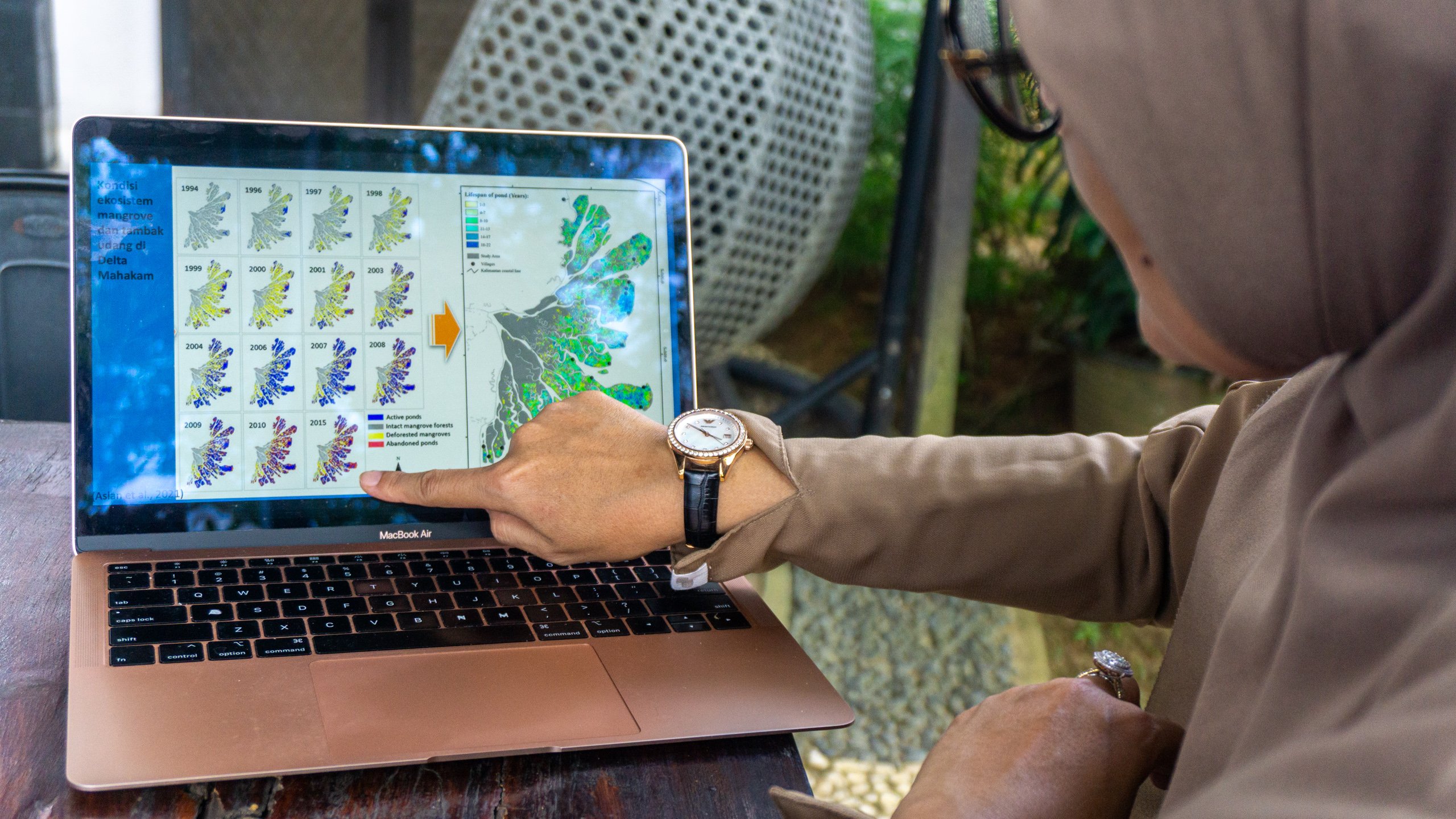
If mangrove clearance continues unchecked, the Mahakam Delta will be nothing but a memory
Esti Handayani Hardi
She insisted that it is not the silvo-aquaculture methods that are flawed, but their implementation. Success should be measured by long-lasting results, not just the number of trees planted. “There needs to be land rehabilitation first, addressing hydrology and substrate contours,” she said, without which mangrove roots remain vulnerable and can be washed away.
Esti cited a successful example in Muara Badak, some 25km north of Tani Baru, where community awareness and cooperation have led to improvements. “The community here has been practicing silvo-aquaculture for over five years, and it has improved shrimp yields and enhanced biodiversity,” she said.
Esti stressed the importance of acting before it’s too late. “If the pattern of mangrove clearance continues unchecked, the Mahakam Delta will be nothing but a memory,” she warned.
This article is a collaboration between Dialogue Earth and the Wilson Center’s China Environment Forum and the East-West Center on Vulnerable Deltas. The project is supported by the Luce Foundation.
You can read the first installment of the Vulnerable Deltas series here: How China’s most ‘futuristic’ city restored its mangroves
License
Muhibar Sobary Ardan. "A tipping point for mangrove restoration and shrimp farming in Indonesia." Dialogue Earth, October 17, 2024. Republished under a Creative Commons Attribution-NonCommercial-NoDerivatives 4.0 International License.




